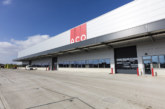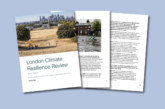Stakeholders at every level of the construction industry must acknowledge the growing risks posed by ageing drainage infrastructure, poor maintenance schedules and increasingly volatile weather patterns warns water drainage specialists ACO Water Management.
As the country continues to experience extreme weather changes and rising temperatures, the hot weather could lead to further heavy downpours, as already experienced across the UK in July. With some forecasters predicting that extreme heatwaves could become a long-term regularity each year, ACO is calling on all parties involved in water management system design to factor in for increased contingency for climate change, as well as greater funding for more stringent maintenance processes.
According to ACO, the impact of the flooding is being exacerbated by a lack of maintenance being carried out on the drainage. Inspection routines are essential to efficient performance of the channels and they should be carried out at frequent and regular intervals, dependant on the location and environment.
Rob Butcher, Design Services Manager at ACO, said: “Maintenance is crucial for drainage channels to help keep the original hydraulic capacity of the drainage system, while also ensuring safety for pedestrians and vehicular traffic. Most of the time, inspections lead to the removal of debris that has accumulated over time, and drainage channels should be inspected at least once a year.”
While flooding may seem inevitable when the UK experiences two weeks’ worth of rain in a 24-hour period, regular maintenance of drainage channels could mitigate long term damage from extensive flooding. ACO is also calling for engineers and project managers to engage with water management specialists at the earliest opportunity to ensure that maintenance is factored in at the design stage and there is an appropriate level of access to support inspections.
Rob Butcher added: “Many water management systems have been in place for a number of years and were not necessarily designed with a contingency plan to deal with the more frequent weather changes we have experienced in recent years. Surface water drainage systems are often designed to cope with a 1:30-year storm, which is problematic as the combination of a small system design and poor maintenance is likely to heighten the flood risk.
“While we can’t control the weather shifts that we are experiencing, we do have an important role to play in ensuring that flood risks are mitigated. Designers should consider the likelihood for increased rainfall and reduced maintenance periods.
“We would like to stress the importance of both adequately and regularly maintaining drainage channels, especially if we can expect to experience further heatwaves and subsequent downpours. Something which is often missed is cleaning channels following heavy storms where excess silt builds up, especially following periods of dry weather.”
Taking advantage of online tools, such as ACO’s hydraulic design software, QuAD, allows designers and engineers to plan ahead and understand the environmental challenges they may face ahead of the build phase of a project. This is achieved through the software’s ability to integrate with Google Maps, meaning users can input their site’s exact location and automatically receive the rainfall intensity for the area. Users can also test their proposed maintenance schedule using the in-built resilience feature.
Rob Butcher concludes: “If you are currently working on a project and haven’t yet considered how to mitigate a potential flood risk, we advise that you get in touch with a water management specialist. If you’d like some support, we can also advise on using QuAD and assist in designing for your specific project factoring in the changing climate and up-to-date calculations.”









